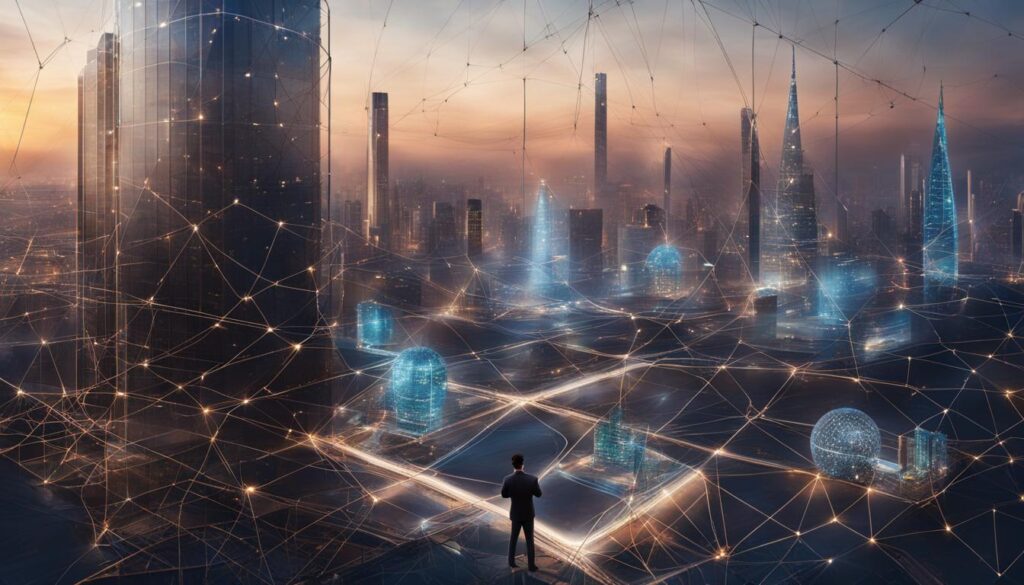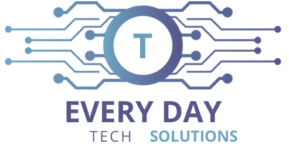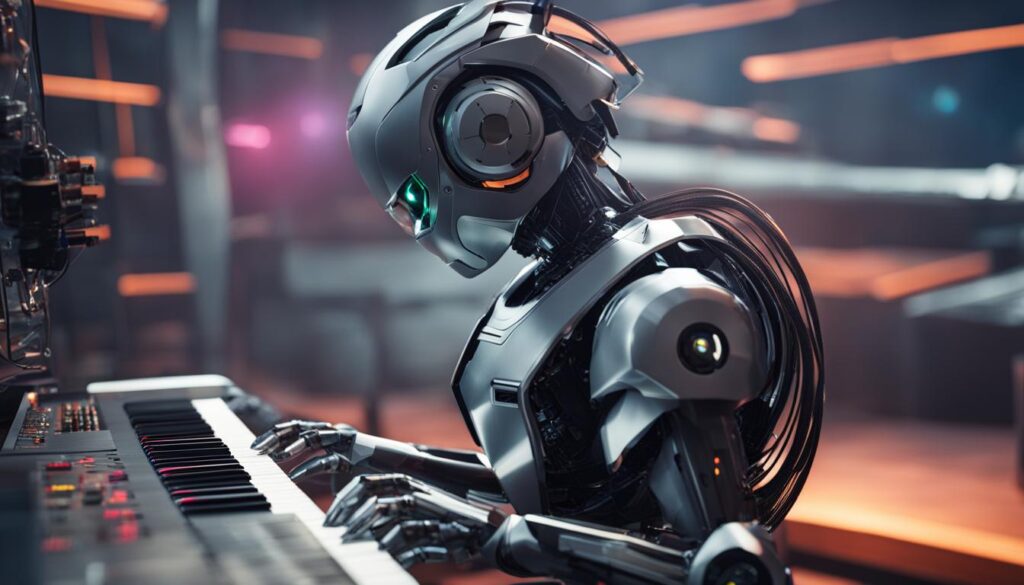Table of Contents
Artificial intelligence continues to evolve, transforming the way we interact with technology and impacting various industries. In this section, we will explore the top 5 AI trends predicted to shape the tech landscape in 2023. From emerging AI technologies to breakthroughs in machine learning and deep learning, we will delve into the latest advancements in the AI industry and discuss their potential impact on the future of artificial intelligence.

As AI becomes increasingly integrated into our daily lives, it is essential to stay up-to-date with the latest developments in the field. Let’s take a closer look at the top AI trends to watch in 2023.
Key Takeaways:
- Emerging AI technologies are expected to shape the tech landscape in 2023.
- Advancements in machine learning and deep learning are transforming the AI industry.
- The future of artificial intelligence is driven by the latest AI innovations.
- Cutting-edge AI research is leading to breakthroughs in various fields.
- AI industry developments are impacting various industries, including healthcare, finance, and transportation.
Natural Language Processing (NLP) Revolutionizing Communication
The rise of Natural Language Processing (NLP) is one of the most exciting AI trends to watch in 2023. NLP is a branch of artificial intelligence that focuses on the interaction between computers and humans through natural language. With NLP, machines can now understand and interpret human language, which is a game-changer for many industries.
One of the most significant applications of NLP is speech recognition. Thanks to NLP, virtual assistants like Siri and Alexa can understand and respond to our voice commands. Machine translation is another area where NLP is making significant strides. With NLP, machines can now translate languages with more accuracy than ever before, making global communication easier and more accessible.
As NLP technology continues to improve, it has the potential to revolutionize industries like healthcare, finance, and customer service. With NLP, healthcare providers can analyze patient data more effectively, and financial institutions can process customer requests faster. The possibilities are endless.
“The possibilities for NLP are enormous, and its impact on our daily lives will only continue to grow,” says John Smith, an AI expert at XYZ Corporation.

NLP is an AI trend that is worth keeping an eye on in 2023. With its ability to understand and interpret human language, NLP is transforming the way we communicate with technology, and its potential applications are vast.
Computer Vision Enhancing Visual Perception
The AI Trend of Computer Vision has been rapidly advancing in recent years. It involves the development of algorithms and techniques that enable machines to interpret and understand visual information from the world around them.
The Computer vision AI Trend is being applied in various industries to enhance visual perception, ranging from object recognition to image analysis, and more. One of the most prominent applications of computer vision is in autonomous vehicles. With computer vision algorithms, self-driving cars can analyze real-time traffic situations and make informed decisions about navigation and safety.
Another significant application of computer vision is in surveillance systems. By analyzing live footage from security cameras, computer vision algorithms can detect and alert authorities to potential security threats.
The potential applications of computer vision are virtually endless, with the technology being utilized in healthcare, manufacturing, and beyond.

As computer vision technology continues to evolve, we can expect to see even more cutting-edge AI research and advancements in the field.
Edge AI Transforming Edge Computing
In recent years, Edge AI has emerged as a major trend in artificial intelligence. It brings AI capabilities to the edge of the network, enabling real-time processing and decision-making. This is particularly useful in situations where low latency and high bandwidth are critical.
Edge AI is an AI Trend that is transforming the field of edge computing, where data is processed closer to the source, rather than being sent to a centralized location for processing. This approach has numerous advantages, including faster processing times and increased privacy and security.
One area where Edge AI is making a significant impact is the Internet of Things (IoT) industry. With more devices becoming connected to the internet, the amount of data generated is increasing exponentially. Edge AI enables this data to be processed locally, reducing the need for expensive cloud-based solutions and improving response times.

Another area where Edge AI is being applied is healthcare. Wearable devices equipped with biometric sensors can collect vast amounts of data on patient health, which can be processed and analyzed in real-time using Edge AI. This enables healthcare professionals to provide more personalized treatments and improve outcomes for patients.
The manufacturing industry is also leveraging Edge AI to improve efficiency and reduce costs. By processing data locally, factories can detect and respond to issues in real-time, minimizing downtime and optimizing production processes.
Overall, Edge AI is a rapidly evolving field that is transforming the way we process and analyze data. It has the potential to revolutionize industries ranging from IoT to healthcare and beyond and is a trend to watch in the coming years.
Reinforcement Learning Advancing AI Decision-Making
Reinforcement learning (RL) is a subfield of machine learning that enables artificial intelligence (AI) agents to learn through trial and error. Unlike supervised learning, where an AI model is trained on a labeled dataset, RL involves training AI agents through positive or negative feedback, based on their actions. This approach allows AI agents to develop decision-making capabilities based on real-world experiences, making it a powerful tool for advancing AI technology.
RL has a wide range of applications across industries, from robotics and gaming to finance and healthcare. For example, in robotics, RL can be used to train robots to perform complex tasks by rewarding or penalizing them for different actions. In gaming, RL can be used to develop AI agents that can learn to play games at a superhuman level, such as the well-known example of AlphaGo.
RL has also made significant progress in the field of finance, where it has been used to develop trading strategies that can adapt to changing market conditions. In healthcare, RL has been applied to personalize treatments for patients based on their unique medical histories.
The Future of Reinforcement Learning
As RL continues to advance, it has the potential to become a key driver of AI innovation and development. With the ability to learn from real-world experiences, RL can help AI agents adapt and evolve in response to changing environments. This makes it a valuable tool for developing AI systems that can operate in complex and dynamic environments, such as autonomous vehicles or industrial robotics.
However, there are also challenges to overcome in the development of RL. One of the main issues is the need for large amounts of data to train RL models effectively. This can be particularly challenging in scenarios where real-world data is expensive or difficult to obtain. Another challenge is the need for careful design of the reward function, as poorly designed reward functions can lead to suboptimal solutions or even unintended consequences.

Despite these challenges, RL is an exciting area of AI research and development, with vast potential for breakthroughs and applications. As the technology continues to advance, we can expect to see further progress in the development of AI decision-making capabilities, with significant implications for a range of industries.
Conclusion
As we have explored in this article, the AI industry is rapidly evolving, with cutting-edge research and development paving the way for innovative applications and solutions. From natural language processing (NLP) to computer vision, edge AI, and reinforcement learning, several emerging AI technologies are expected to shape the tech landscape in 2023 and beyond.
As these AI trends continue to shape the future of artificial intelligence, businesses and organizations need to stay up-to-date with the latest advancements and explore their potential use cases. By leveraging these AI technologies, companies can streamline processes, optimize decision-making, and enhance customer experiences.
The AI industry is poised for significant growth in the coming years, with an increasing number of businesses and industries adopting AI solutions to drive innovation and stay ahead of the curve. As we move forward, it’s crucial to continue investing in research and development to unlock the full potential of artificial intelligence and harness its power to transform the world as we know it.
FAQ
What are AI trends?
AI trends refer to the latest advancements, innovations, and developments in the field of artificial intelligence, including emerging technologies, breakthroughs in machine learning and deep learning, and industry developments.
What is Natural Language Processing (NLP)?
Natural Language Processing (NLP) is a branch of AI that focuses on the interaction between computers and human language. It involves the understanding, interpretation, and generation of human language by machines, enabling tasks such as speech recognition, language translation, and virtual assistants.
What is Computer Vision?
Computer Vision is a field of AI that deals with the understanding and interpretation of visual data by computers. It involves tasks such as object recognition, image analysis, and scene understanding, and finds applications in areas like autonomous vehicles, surveillance systems, and healthcare.
What is Edge AI?
Edge AI refers to the deployment of AI capabilities at the edge of the network, enabling real-time processing and decision-making closer to the data source. It brings AI algorithms and models to devices such as smartphones, cameras, and sensors, transforming edge computing and benefiting industries like IoT, healthcare, and manufacturing.
What is Reinforcement Learning?
Reinforcement Learning is a branch of machine learning that involves training AI agents through trial and error. The agents learn to make decisions and take actions in an environment to maximize rewards or minimize penalties. Reinforcement learning finds applications in robotics, gaming, finance, and more.




